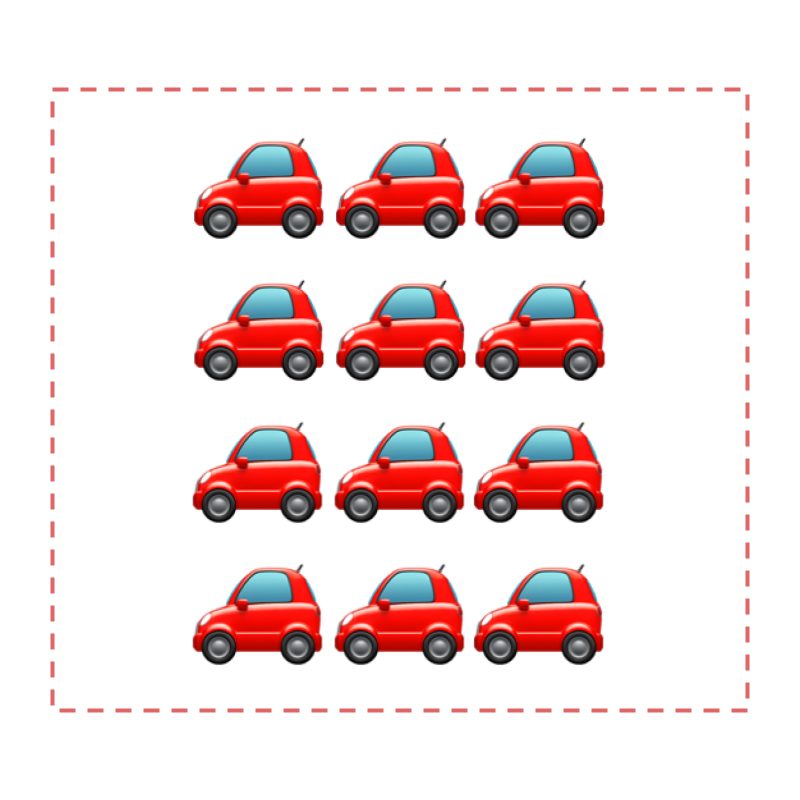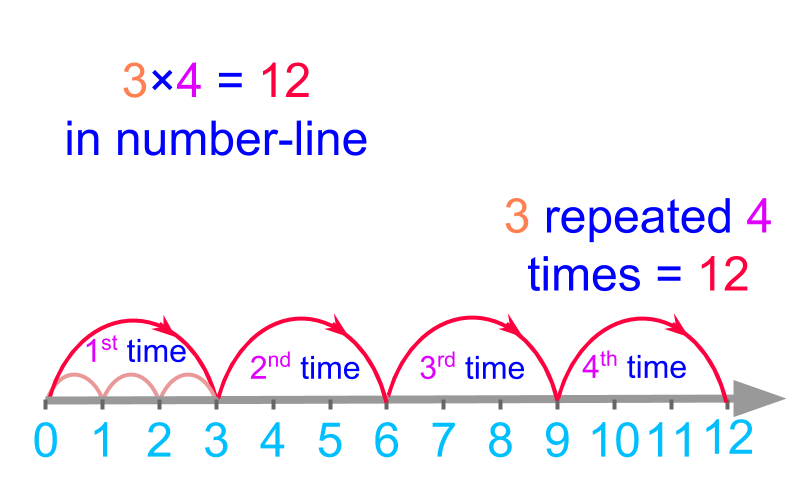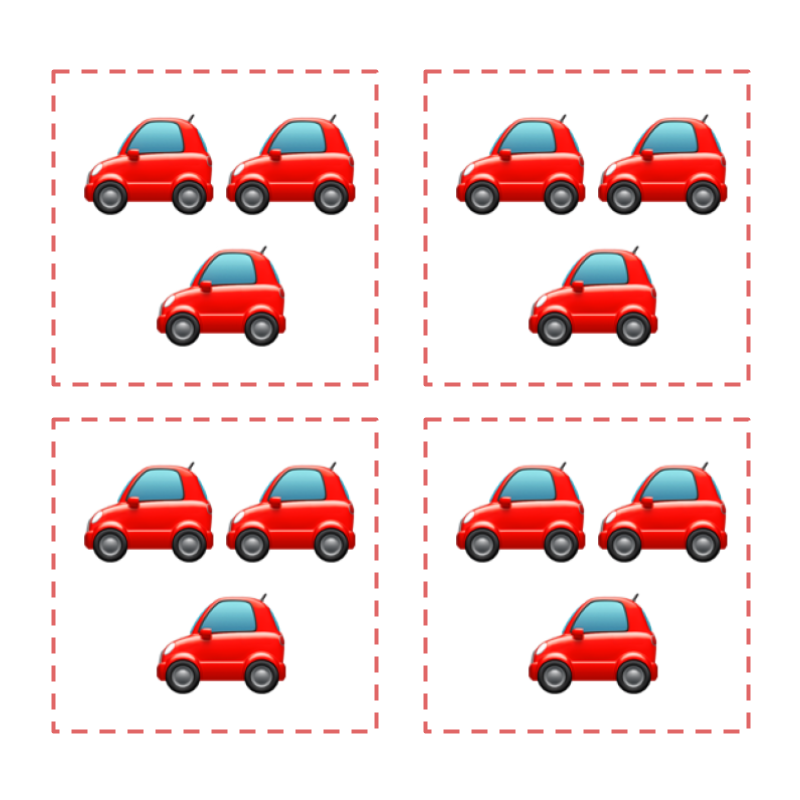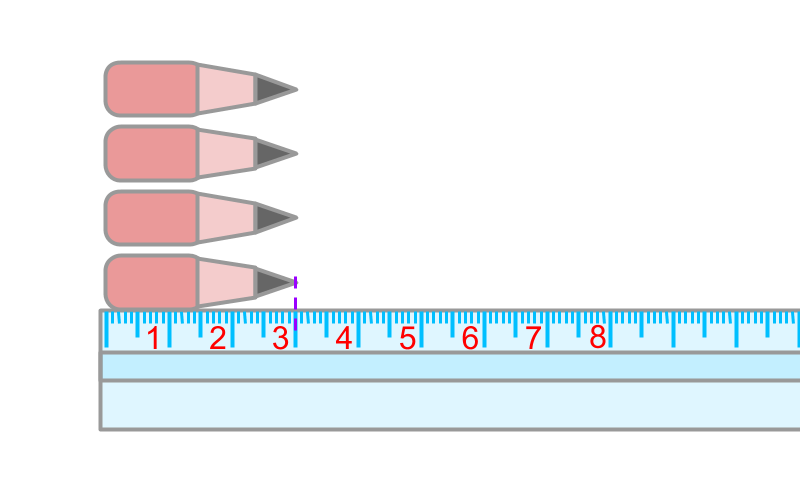
what you'll learn...
overview
This page introduces multiplication of whole numbers as -- one number, multiplicand, is repeated the number of times given by the second number, multiplier. The combined result of the repetition is counted or measured as the product of the multiplication.
 Count of cars is repeated number of times. The resulting count is .
Count of cars is repeated number of times. The resulting count is .
 Measure of is repeated times. The resulting measure is .
Measure of is repeated times. The resulting measure is .
The same is abstracted for multiplication in number-line.
 The definition of multiplication in first principles form the basis to understanding the simplified procedure for multiplication of large numbers.
The definition of multiplication in first principles form the basis to understanding the simplified procedure for multiplication of large numbers.
repeated addition

cars were given to show rooms each.
The total number of cars given are .
The problem is understood to be that of repeated addition.
cars were given to the first show room, then to the second, then to the third, and then to the fourth. So was repeatedly added times to get the total.

Considering cars given to show rooms each. All the cars are shown in the figure. Counting the number of cars, the result is .

There are pencils, each of centimeter long.
The combined length of the pencils is centimeter.
The problem is understood to be that of repeated addition.
Length of one pencil is centimeters. To get the combined length of such pencils, the length is repeatedly added times.

Considering pencils, each of 3 centimeter long. The four pencils are placed side-by-side and the length measurement is taken from . The measure at the end is . The combined length is centimeters.
The count or measure of a quantity can be repeatedly added or multiplied.
The multiplication results in count or measure of the combined quantity.

Multiplication in the number-line is given in the figure.
The value is repeated times to land in . The result of the multiplication is .
The word "multiplication" means: increase in quantity many times over.
multiplicant, multiplier, product
Multiplication - First Principles : Two numbers are considered, each of which represents a count or measurement. One of the amount is repeated the number of times given by the second amount to form the result representing the collective amount from such repetition.
eg:
is the multiplicand
is the multiplier
is the product
The word "multiplicand" means: the number or quantity that is repeatedly added in a multiplication.
The word "multiplier" means: the number of times a quantity is repeatedly added.
The word "product" means: the result of multiplication.
summary
Multiplication - First Principles : Two numbers are considered, each of which represents a count or measurement. One of the amount is repeated the number of times given by the second amount to form the result representing the collective amount from such repetition.
eg:
is the multiplicand
is the multiplier
is the product
Outline
The outline of material to learn whole numbers is as follows
Note: click here for detailed outline of Whole numbers
• Introduction
→ Numbers
→ Large Numbers
→ Expanded form
→ Face and place values
→ Approximation and Estimation
• Comparison
→ Comparing two numbers
→ Number line
→ Predecessor & Successor
→ Largest & Smallest
→ Ascending & Descending
• Addition Subtraction
→ Addtion: First Principles
→ Addition: Simplified Procedure
→ Subtraction: First Principles
→ Subtraction: Simplified Procedure
• Multiplication Division
→ Multiplication: First Principles
→ Multiplication: Simplified Procedure
→ Division: First Principles
→ Division: Simplified Procedure
• Numerical Expression
→ Introducing Numerical Expressions
→ Precedence
→ Sequence
→ Brackets